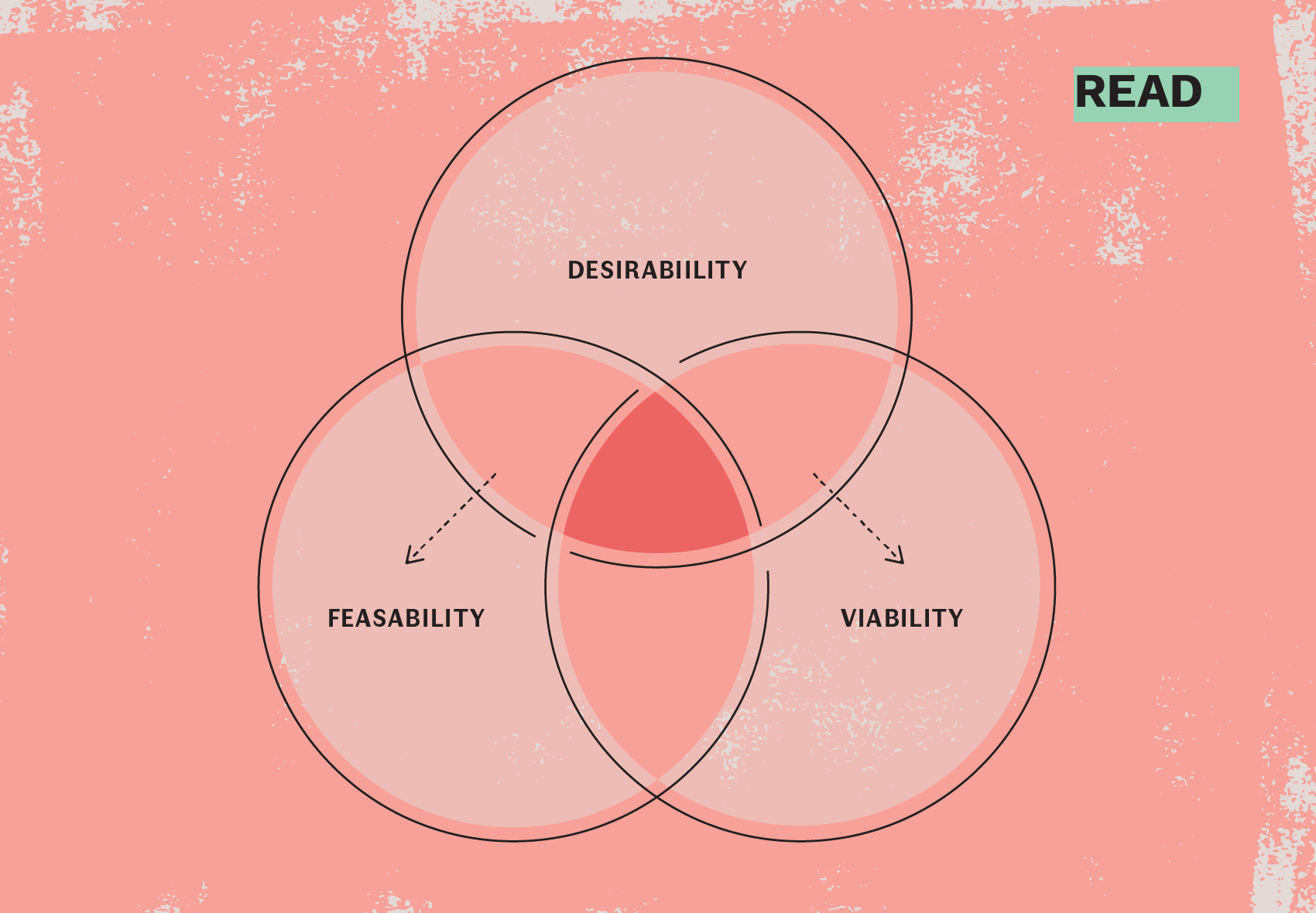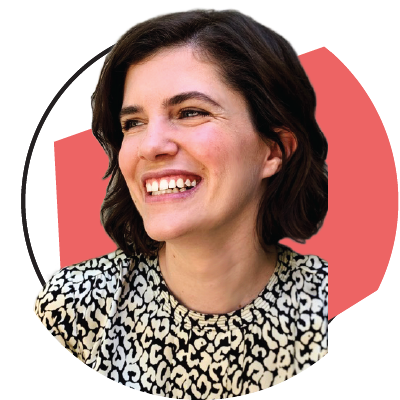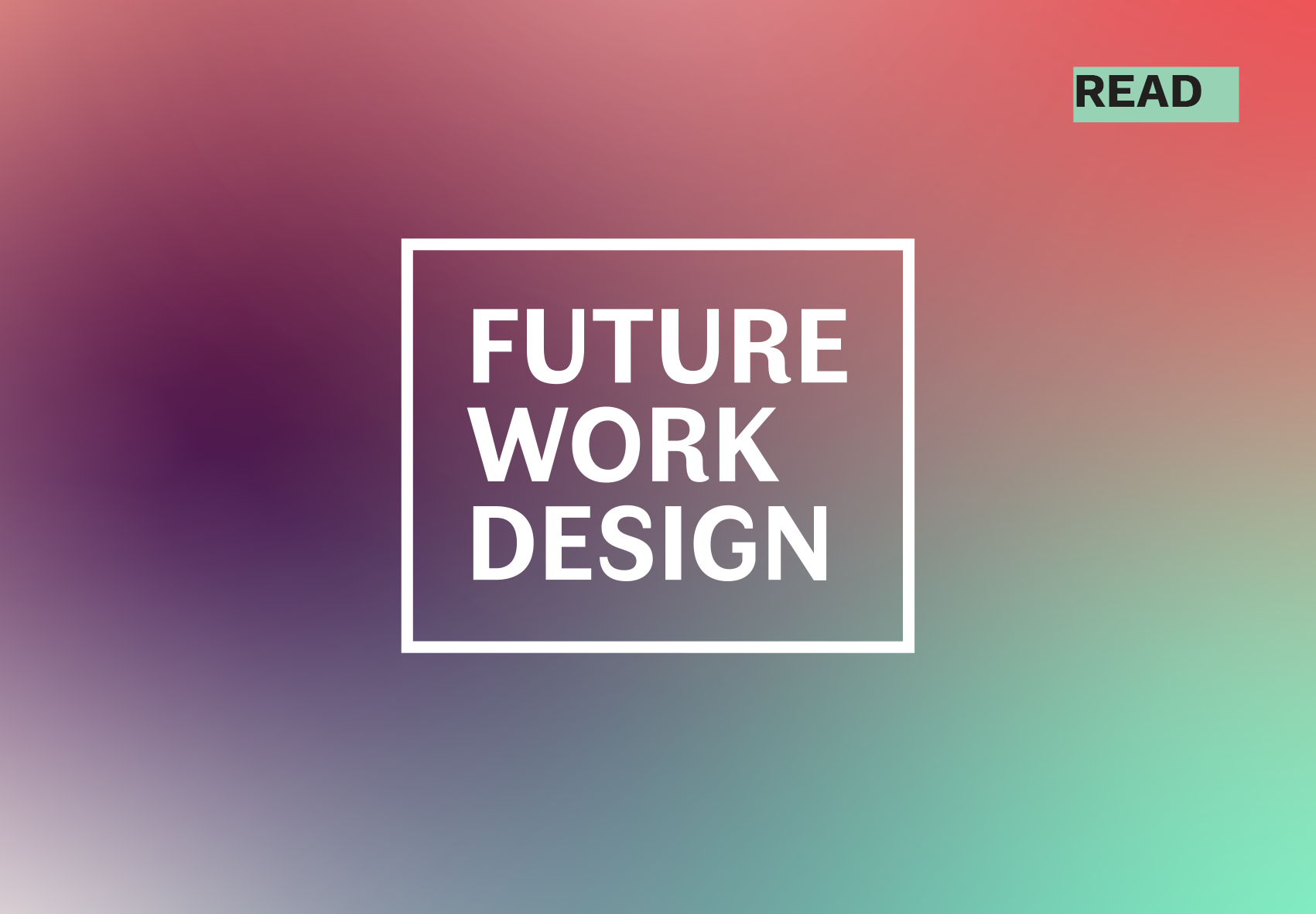3 keys for unlocking strategic advantage by adopting design tools
When I began my career in Human Centered Design (HCD), nearly all conversations were about designing better products and services that consumers really wanted. I have always been more curious, however, about the power of HCD to transform the organizational experience. How might we create workplaces and organizations that people actually want to work for?
When I looked to the organizational design field, however, I was sorely disappointed in the lack of curiosity, creativity, humanity — DESIGN, really — in the practice. Most organizational strategists I know affiliate more closely to the disciplines of “management science” and “leadership” than design.
Indeed, the historical roots of organizational design are much closer to an engineering practice than a design practice. My mentor Tim Brown once shared that engineering is the appropriate tool when your goals are functional; design is appropriate when your goals are a mix of functional and emotional. How is it that the design of organizations — the most human of all systems — is less grounded in humanity and empathy than pretty much any other design field: architecture, product design, experience design, urban planning, etc.?
There are a growing number of designers solving organizational challenges, but I hope that the broader field of organizational strategy will evolve to see their work as design, see themselves as designers, and adopt the tools and approaches of design.
What would it look like if organizational design was grounded in human centered design?
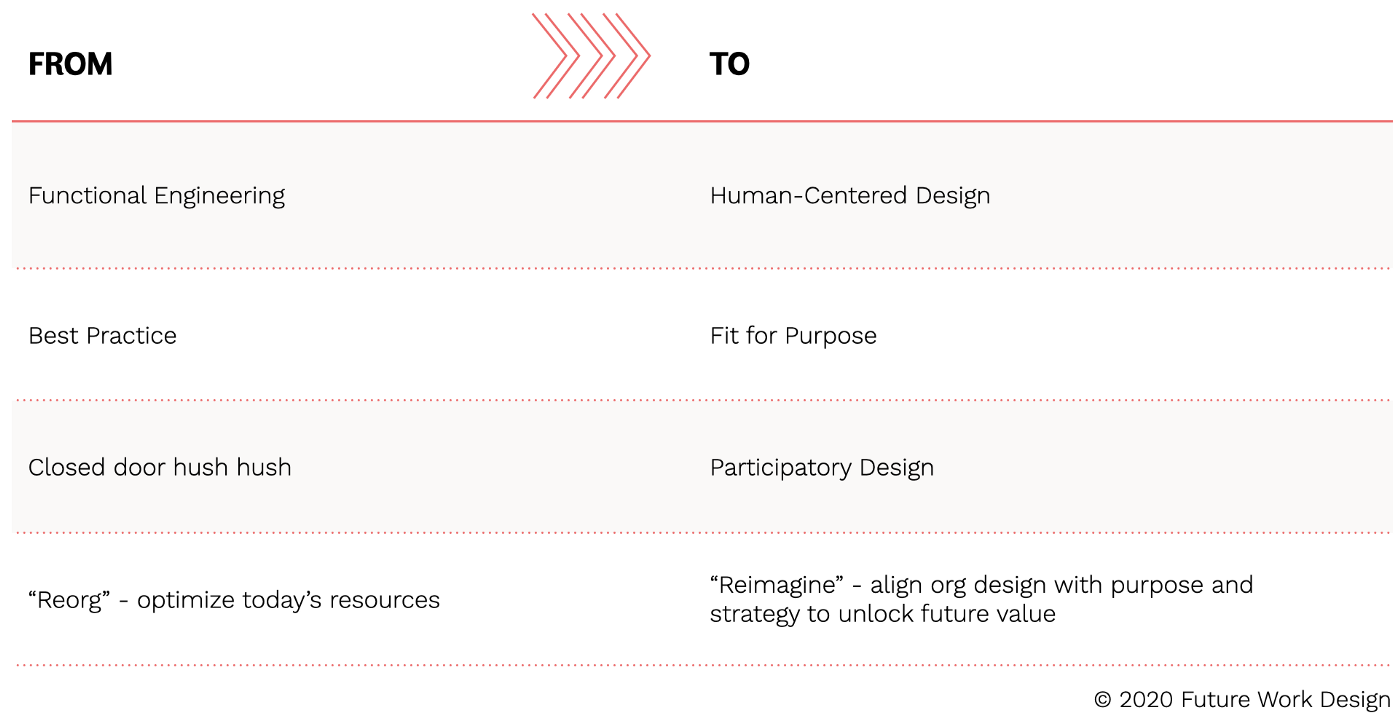
Here are three starting points:
#1 | Recognize every aspect of an organization is a choice
By “organizational design” I mean all the conscious and unconscious choices made to structure the work of an organization. Here are some examples of the range of design choices that every organization on earth makes, intentionally or not:
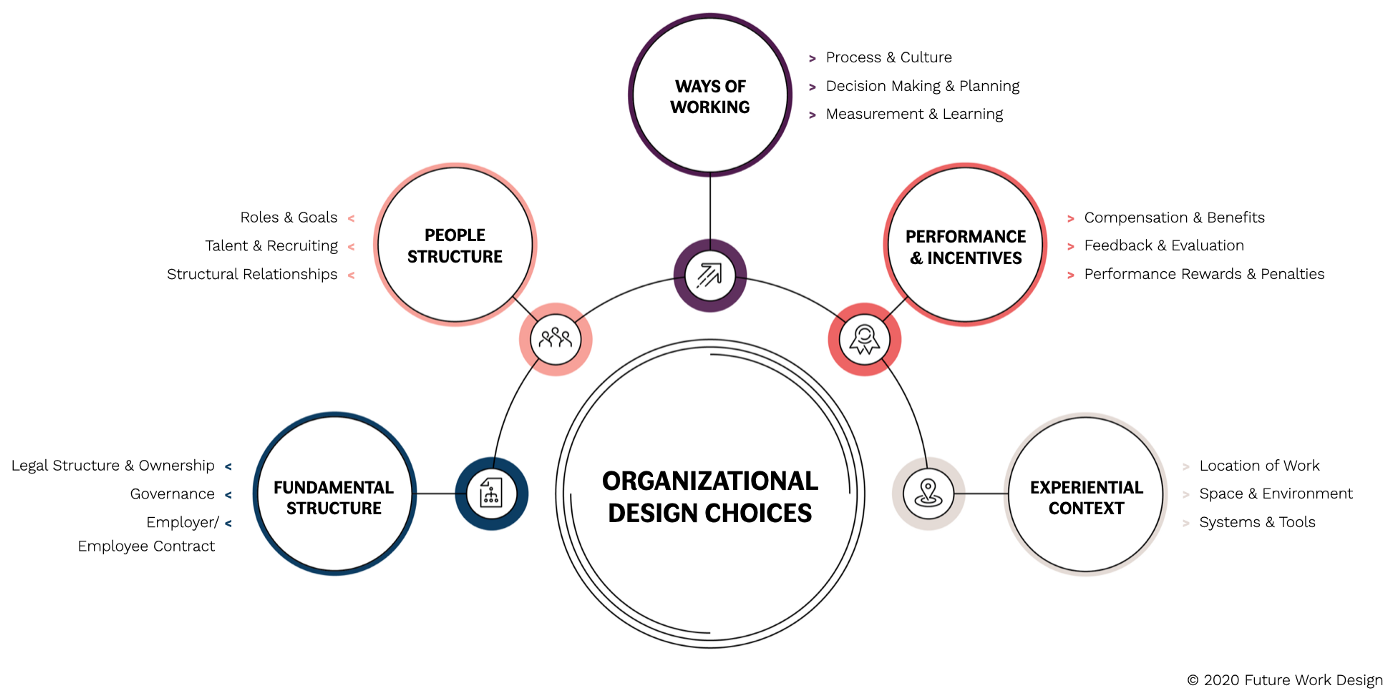
#2| Don’t settle for best practice — you can find strategic advantage in organizational innovation
When solving organizational design challenges, we can use a twist on the classic HCD principles I learned while at IDEO to reimagine the structure and norms businesses use on the inside.
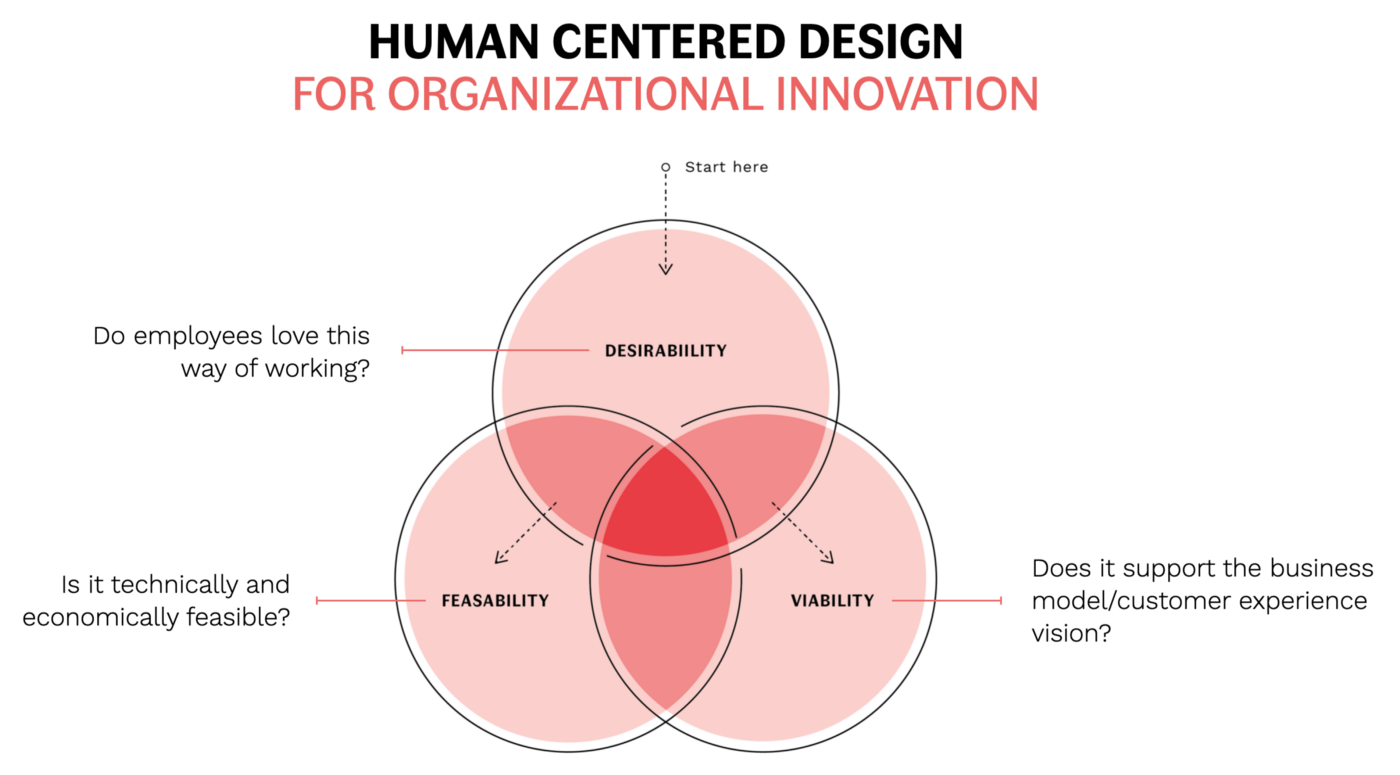
HCD for Organizational Innovation adapted from the classic IDEO venn diagram. Credit: Future Work Design
At the overlapping center of the diagram is a rich, wildly unexplored world of organizational innovations that few enterprises are invested in mining. For some reason the same companies that are willing to pour millions into product R&D in search of their next big competitive edge are blind to the ROI that lies in organizational innovation. Why do our aspirations for organizational functionality stop at “best practice”?
In the United States we have inherited a relatively unquestioned legacy of organizational “pre-sets.” In 15 years of organizational strategy work, I repeatedly see the emotional relief that leaders feel when they can participate in a “best practice” — it confers the safety of a way of working that has been “proven” to support their current model. There are two problems with this:
First, best practices ignore potential for a tighter strategic fit between the organization and its purpose and context. Many organizations have bucked “best practice” thinking and rooted their strategic advantage in organizational innovations.
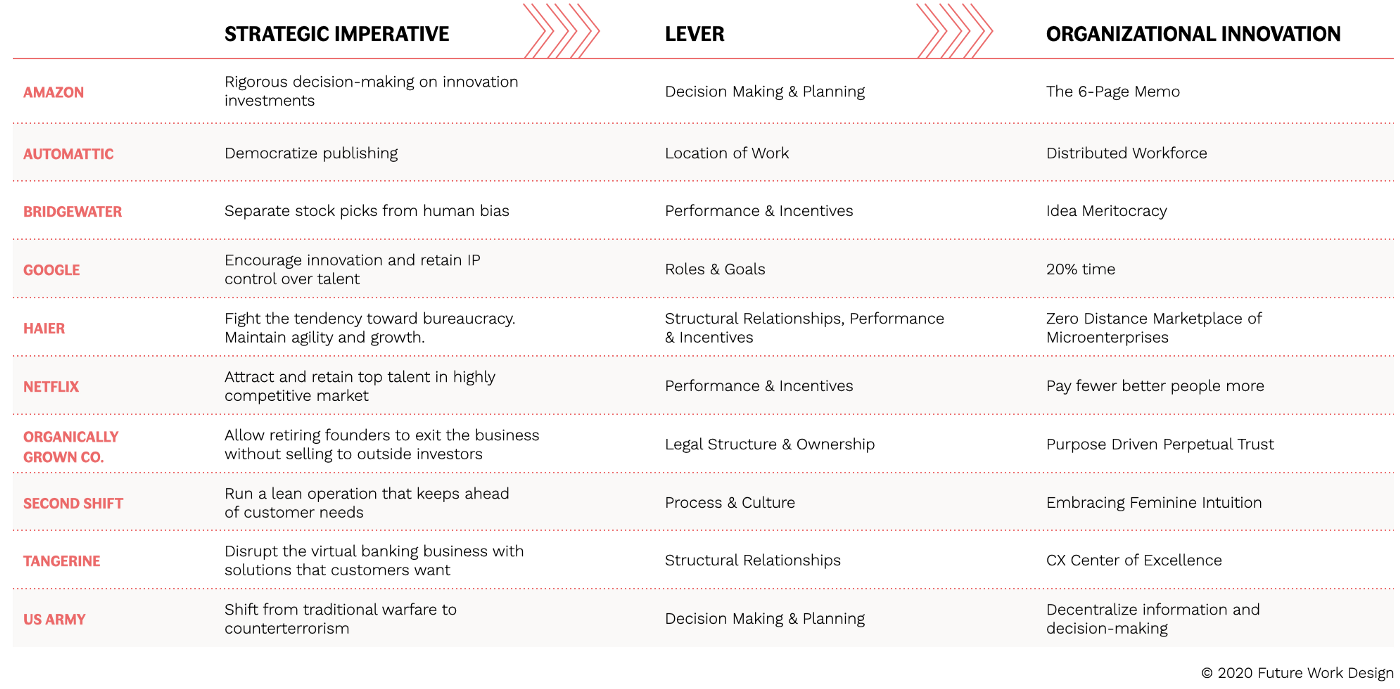
Second, best practices have adapted to serve the mainstream and often don’t work for those on the margin. By definition best practices have risen to the top because they work for most employees at most organizations. With many organizations prioritizing equity and inclusion, it’s important to recognize that from legal structure to compensation to reporting lines, what we euphemistically call organizational “best practices” were largely cultivated in the 20th century at a time that centered an able-bodied, neurotypical, white male workforce. If they weren’t designed with a diverse workforce in mind, we have reason to believe they don’t serve our modern workforce. We can do better.
# 3 | Integrate HCD-adjacent approaches
The classic principles and approaches of human centered design are easily adapted to organizational design, but as complex systems, organizational designers require a broader skillset. Where an industrial designer may need to understand the properties of plastic, we need to understand inclusive design. Where a digital service designer may need to observe usage on many device types, we must be able to design and measure organizational prototypes. The 5 disciplines we draw upon most in this work are:
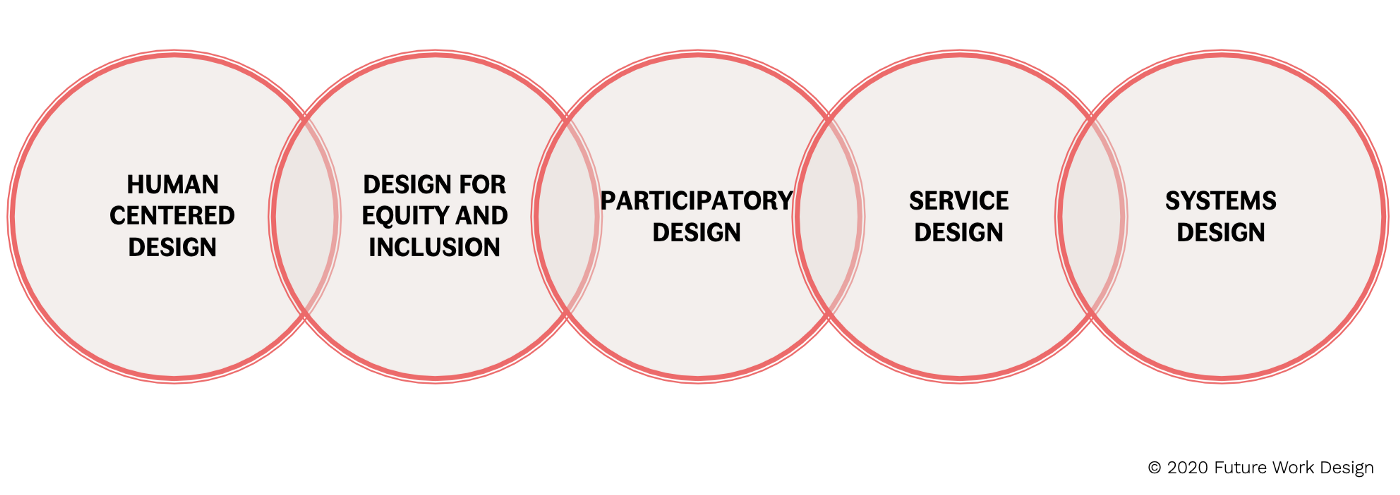
Human Centered Design
- From HCD we take the ideas of direct observational research of organizational systems, separating need finding from solution finding, and organizational prototyping and iteration
- There are so many good resources. I go back to where I first learned at IDEO.
Design For Equity And Inclusion
- From this field we appreciate the unique power dynamics of organizations and the need to always ask “design for whom? design by whom?”
- The article Racism and inequity are products of design. They can be redesigned is a great starting point. I recommend Christine Ortiz’ follow up course Equity Meets Design
- Liberatory Design is also a great resource.
- A number of practitioners in this space have begin coming together in The Equity Design Collaborative.
Participatory Design
- In participatory design we recognize that how we choose to design withrather than design for is essential. We aren’t trying to understand a user’s needs so we can then sell a product back to them. We are trying to intervene in a complex system in a way that engages the expertise and aspirations of the organization’s people. We do a lot of stakeholder mapping.
- I wrote a brief history of co-creation, since there are a lot of different terms for the same idea
- My favorite resources continue to be creative facilitation approaches like Gamestorming, use of visual frameworks, and card decks.
Service Design
- From service design we appreciate that the organization is not an end in itself, it is a means to an end. It has a customer, a front stage, and a backstage. An organization’s design must be oriented to the thing it is putting out into the world. We use the tools of service blueprinting and journey mapping all the time.
- Service Design Tools is a fantastic resource
Systems Design
- From systems thinking we take the practical tools of system mapping and scenario planning.
- Michael Porter’s concept of activity system congruence remains a foundational concept as we leverage the full spectrum of organizational levers to build congruence with an organization’s purpose or strategic goals.
- Leyla Acaroglu wrote a wonderful overview: Tools for Systems Thinkers: The 6 Fundamental Concepts of Systems Thinking
Organizational design must do better.
We must embrace and integrate the tools that we know prioritize ‘fit for purpose’ over ‘best practice’, innovation over homogeneity, and design over engineering. We are here to build human systems that bring out the best in human potential. We are designers.
This is the work we are doing at Future Work Design.
—
To engage with this post or read more of our ideas on organizational design, follow us on Medium.
